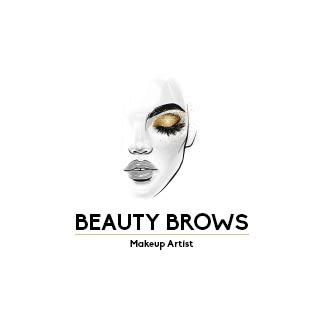When you think about a business, one of the first things that likely comes to mind is its logo. This small, visual representation holds immense power. It’s not just a random image; it’s a carefully crafted symbol designed to evoke specific feelings and perceptions. A crucial part of this design process is the choice of color. But why do these colors matter so much? Let’s dive into the fascinating world of color psychology and explore how color choices in business logos can significantly impact consumer behavior and brand perception.
Understanding Color Psychology
Color psychology is the study of how colors affect human behavior and emotions. It delves into the ways different hues can influence our feelings and decisions. This field has a rich history, with roots in ancient cultures that believed colors had inherent properties and meanings. Today, it is a vital tool in marketing and branding.
The Role of Color in Branding
Colors play a pivotal role in creating a brand’s identity. They are not just decorative; they are strategic. The right color choice can establish an emotional connection with the audience, conveying the essence of the brand at a glance. Think about how you feel when you see the red of Coca-Cola or the blue of Facebook. These colors aren’t random; they are chosen to evoke specific feelings and build brand loyalty.
Primary Colors in Logos
Red: Passion and Energy
Red is a color that screams attention. It’s associated with passion, energy, and excitement. Brands like Coca-Cola and YouTube use red to draw in customers and create a sense of urgency and excitement. This color is perfect for brands that want to appear bold and dynamic.
Blue: Trust and Professionalism
Blue is the go-to color for brands that want to exude trust, reliability, and professionalism. Companies like Facebook, IBM, and Dell use blue to create a sense of security and trustworthiness. It’s a calming color that can help establish a stable and secure brand image.
Yellow: Optimism and Clarity
Yellow is bright and cheerful, often associated with optimism, clarity, and warmth. Brands like McDonald’s and Ikea use yellow to attract attention and convey a friendly and approachable vibe. It’s a great choice for brands that want to appear happy and inviting.
Secondary Colors in Logos
Green: Growth and Health
Green is synonymous with nature, growth, and health. Green is used by companies like Whole Foods and Starbucks to convey a feeling of purity and environmental awareness. This color is ideal for brand logos focused on health, wellness, and sustainability.
Purple: Luxury and Creativity
Purple combines the stability of blue and the energy of red, making it a color of luxury and creativity. Brands like Cadbury and Hallmark use purple to convey sophistication and imaginative flair. It’s perfect for brands that want to appear regal and innovative.
Orange: Friendly and Cheerful
Orange is a color that exudes friendliness and enthusiasm. Brands like Nickelodeon and Fanta use orange to attract a youthful and energetic audience. It’s an inviting color that promotes excitement and fun.
Neutral Colors in Logos
Black: Sophistication and Power
Black is the epitome of sophistication, power, and elegance. Brands like Nike and Chanel use black to convey a sense of luxury and authority. It’s a strong, bold color that can make a powerful statement.
White: Simplicity and Purity
White represents simplicity, purity, and cleanliness. Brands like Apple and Adidas use white to create a minimalist and modern aesthetic. It’s a versatile color that can make other colors pop and create a sense of space and openness.
Gray: Balance and Calm
Gray is neutral and balanced, often associated with calmness and professionalism. Brands like Nissan and Honda use gray to convey a sense of stability and reliability. It’s a practical color that can blend well with other colors to create a sophisticated palette.
Combining Colors in Logos
Creating a logo often involves combining multiple colors to achieve a harmonious balance. Successful brands use color combinations that complement each other and enhance the overall message. For instance, Google’s logo uses a combination of primary colors (blue, red, yellow, and green) to convey diversity and playfulness.
Cultural Influences on Color Perception
Color perception can vary significantly across different cultures. For example, while white is associated with purity and peace in Western cultures, it is often linked with mourning in Eastern cultures. Understanding these cultural differences is crucial for brands operating in global markets. Adapting logos colors to fit cultural contexts can help avoid misinterpretations and enhance brand acceptance.
Color Trends in Modern Logo Design
Trends in logos color evolve over time. Currently, there’s a shift towards more vibrant and bold colors. Brands are increasingly using gradient and multi-color logo designs to stand out in the digital space. Predicting future trends involves looking at changes in technology, culture, and consumer preferences. Staying updated with these trends can help brands stay relevant and appealing.
The Science Behind Color Choices
Scientific studies have shown that colors can significantly impact consumer behavior. For example, a study by the University of Winnipeg found that 90% of snap judgments about products can be based on color alone. Colors can influence everything from brand recognition to purchasing decisions, highlighting the importance of strategic color choices in logos.
Case Studies of Iconic Logos
Analyzing iconic logos can provide valuable insights into effective color use. For instance, the simplicity and distinctiveness of the Nike swoosh in black make it universally recognizable. Similarly, the colorful Google logo reflects the company’s diverse and innovative nature. These examples show how thoughtful color choices can create powerful brand symbols.
Common Mistakes in Color Selection
One common mistake is using too many colors, which can overwhelm and confuse the audience. Another is not considering the cultural significance of colors, which can lead to miscommunication. It’s also important to avoid colors that don’t align with the brand’s message or industry standards.
Testing and Evaluating Logo Colors
Testing is a crucial step in the logos design process. This can involve surveys, focus groups, and A/B testing to gather feedback on different color options. Understanding how the target audience perceives and reacts to colors can help refine the final design and ensure it resonates well.
Adapting Logo Colors Over Time
Brands may need to adapt their logo colors over time due to rebranding efforts or changing market trends. Successful rebrands often retain some elements of the original logo while introducing fresh colors to reflect a new direction. For example, Instagram’s logo evolution from a realistic camera to a gradient icon demonstrates a successful color adaptation to stay modern and relevant.
Conclusion
Colors are a powerful tool in logo design, capable of conveying complex emotions and messages at a glance. Understanding the psychological impact of color choices can help businesses create strong, memorable logos that connect with their audience. By considering factors like cultural differences, current trends, and scientific insights, brands can make informed decisions that enhance their identity and appeal.























